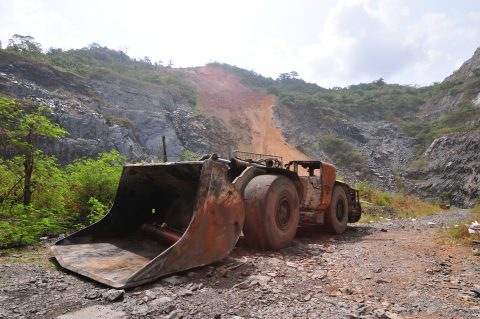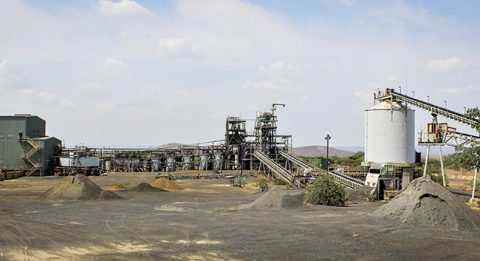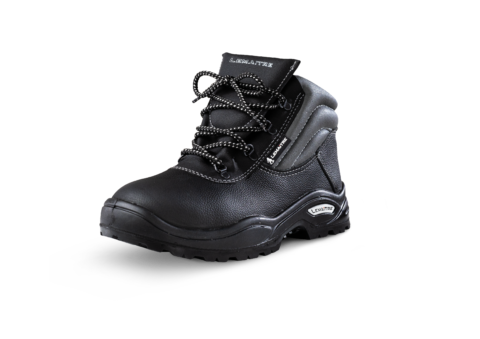SA Mining
Battery Metals Outlook
By: Afriforesight’s Head of Battery Metals Pearson Mururi
Lithium-ion batteries have a variety of chemistries, with lithium iron-phosphate (LFP), lithium nickel-manganese-cobalt (NMC) and lithium nickel-cobalt-aluminium (NCA) batteries used most. These chemistries have different compositions (see graph below) providing a trade-off between cost and energy density, with energy density being the major influencing factor in driving range. LFP batteries are the cheapest battery type, but least energy-dense, and therefore give a lower driving range. On the other hand the more expensive NCA battery types have higher energy density and give a longer driving range. The future demand for metals used in batteries will depend on both the growth in NEV sales as well as shifts in competing battery chemistry.
Although NEVs are still a small part of the auto-market (5% share in 2019), sales have grown rapidly (30% in 2017 and 2018, and about 11% in 2019). Government subsidies, environmental concerns and advances in battery technology have underpinned this growth – led by China, which accounts for about 30% of global NEV sales.
NEV sales outlook unpacked
Many governments have long-term targets to phase out combustion engines and have introduced incentives to support the transition. Automakers are embracing the trend. Market leader Tesla is targeting 790 000 EVs per annum from the United States (US) and China by end-2020, with new plants also set to come online in Germany and the US from 2021. Toyota, the world’s largest automaker, aims for EVs to account for 50% of sales by 2025. Volkswagen, the second largest automaker, plans to invest $24-billion in zero-emissions vehicles, targeting three million EV sales per year by 2025.
Afriforesight forecasts the NEV market share to continue rising to about 14% in 2025 – led by China and Europe. However in 2020 NEV sales should be tempered by low consumer spending due to COVID-19 and the global economic fallout. Sales should then lift from 2021 driven by higher subsidies, tighter emission regulations and new production capacity. But driving range limitations, lack of charging infrastructure and high costs should temper growth until 2023, but thereafter sales should accelerate as these concerns ease.
Driving range
Current fully electric vehicles by top automakers have diverse driving ranges – from 322km offered by Audi’s e-tron, to 647km offered by Tesla’s Model S LR+. We expect manufacturers to continue pushing research and development to provide 800-1 000km-range NEVs to better compete against conventional vehicles.
Charging infrastructure
Charging infrastructure should continue to expand with new installations led by Chargepoint and EV Box who plan to install about 3.5 million charging points in Europe and North America by 2025. Some major oil producers also plan to install charging points; for example, Shell anticipates 20% of its fuel station sales by 2025 to come from NEV recharging and low-carbon fuels.
Costs
Lithium-ion batteries are about 50% of battery-electric vehicle costs and manufacturers aim to lower this to about $100/kWh (from around $150/kWh in 2019) to be cost-competitive with conventional vehicles in the long term, supported by a combination of technological advancement and improving economies of scale as producers ramp up capacity (see chart).
China
NEV sales in China have largely been driven by government subsidies. However a 50% subsidy cut in July 2019 led to 31% year-on-year decline in sales in the second half of 2019. This led the government to extend subsidies beyond the initial end-2020 target to end-2022. This should support NEV sales in China until 2023. Thereafter growth should continue accelerating as the government pushes auto manufacturers to meet its goal of NEVs accounting for 20% of vehicle sales by 2025.
European Union
NEV sales comprised 16.2% of European Union (EU) passenger vehicle sales in the first quarter of 2020 and should continue to gain market share, supported by the introduction of fleet-wide CO2 emission standards. Compared to 2007 fleet levels, 2021 fleet emissions need to show a 40% reduction (and a further 37.5% reduction by 2030). Subsidies by governments – led by Germany and France – who increased subsidies by 15-50% earlier this year should further support sales.
Battery metal demand unpacked
Underpinning the NEV revolution are technological advances in the manufacture of lightweight and energy-dense lithium-ion batteries, where lithium, cobalt, nickel, manganese and aluminium are major ingredients in cathodes and graphite is used for the anode. These metals should benefit from the NEV revolution, but in the medium term demand growth for nickel should be most firm – displacing some cobalt as its use is limited by human rights concerns.
Lithium
All electric vehicle batteries as well as solid state batteries in development contain lithium, where lithium salts are used as the electrolyte to transfer electricity between electrodes. Battery demand constitutes about 54% of total lithium demand.
Australia accounts for about 55% of lithium supply, where new mines began coming online from 2016, with additional projects under development. The recent collapse in lithium prices has led to curtailments as well as the postponement of some projects. The projects still proceeding, as well as expected restarts from some idled producers, should meet demand until at least 2023.
Cobalt
Battery demand accounts for over 50% of cobalt use and should continue rising despite efforts to eliminate its use due to concerns over child labour and human rights abuses in the Democratic Republic of the Congo (DRC), which accounts for about 70% of global supply. Cobalt remains key in batteries as it provides stability and limits the risk of spontaneous explosions. Artisanal mining in the DRC accounts for about 10% to 30% of the country’s output and activity responds quickly to price movements. Cobalt is currently oversupplied and should remain so until 2024. Various projects are under development in the DRC, but the key supply swing factor is the timing of Glencore’s Mutanda operation restart (18% of global supply in 2019, idled in November 2019).
Nickel
Although batteries are only about 5% of nickel use, a shift to higher driving range vehicles needs more nickel as it improves energy density. Nickel is mined from near-surface laterite ores (dominated by Indonesia) and sulphide ores. The latter is more suited for production of nickel sulphate – used in batteries. Nickel sulphide deposits are mostly underground and require prices above $14 000/t to attract meaningful investment. Lack of investment in recent years should support our expectations of supply deficits from 2022. Sulphide ores’ price premium should widen to incentivise greater use of laterite ore in stainless steel manufacturing. This will be necessary to free up sulphide ores for batteries – helping avoid the costly upgrading of laterites.
Graphite
Graphite demand should grow firmly as it is the major battery material used in anodes. However some battery manufacturers have successfully used cheaper silicon to replace 15% of the graphite content. In the long term we expect the share of silicon in some NEV batteries to gradually increase.
The fine flake graphite used in batteries is in oversupply after Syrah Resources started production in 2017 at the 350 000-tonne-per-year Balama mine in Mozambique. Syrah suspended production in March pending an operational review. The timing of the restart should impact the supply and demand balance. We expect the market to be oversupplied until end-2021 on weak demand and Chinese capacity expansion – as government sees graphite as a strategic mineral.
Manganese and aluminium
Manganese and aluminium should benefit from increasing NEV sales. However, impact on overall demand should remain minor – with batteries expected to account for only a small share of demand even by 2025.







 Sign-up and receive the Business Media MAGS newsletter OR SA Mining newsletter straight to your inbox.
Sign-up and receive the Business Media MAGS newsletter OR SA Mining newsletter straight to your inbox.